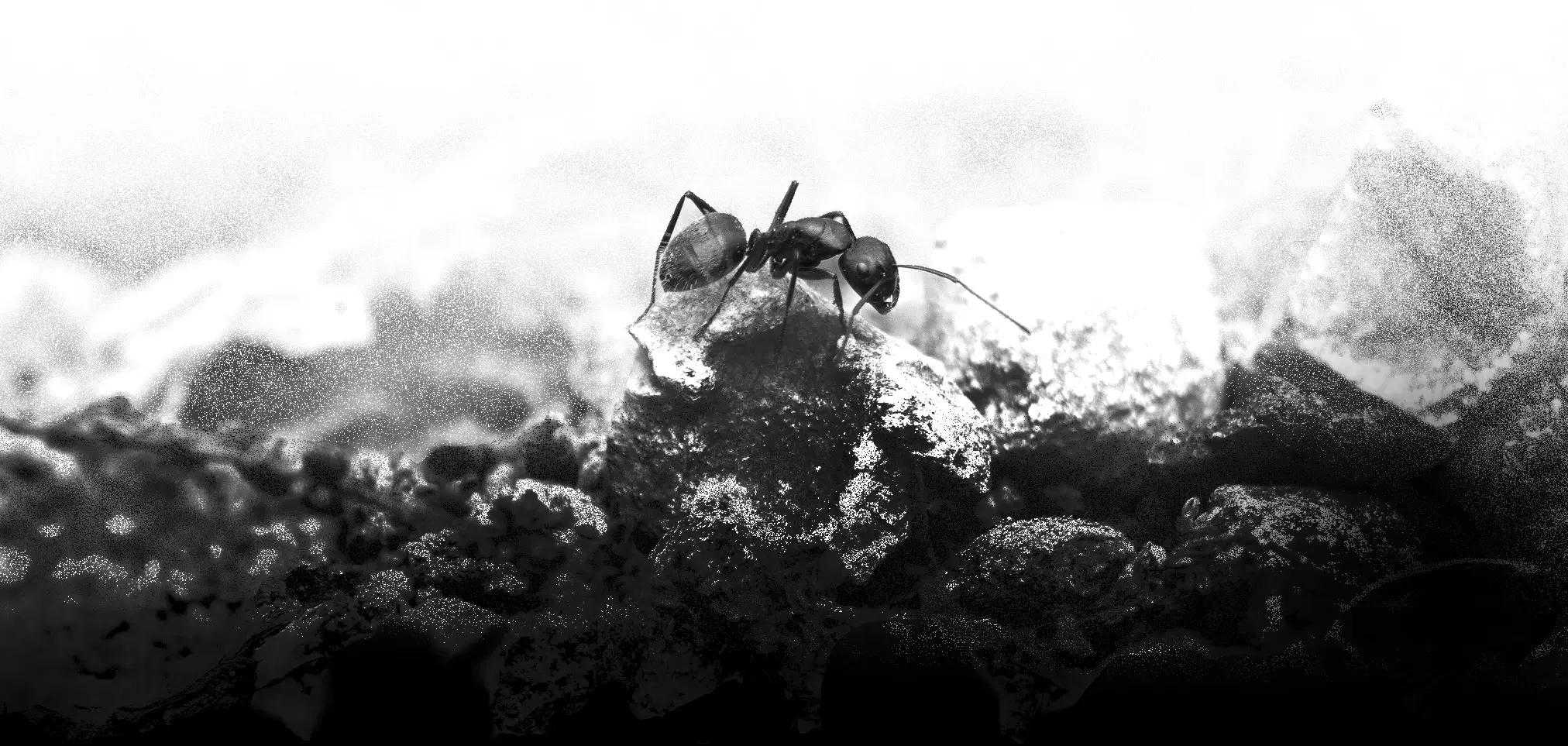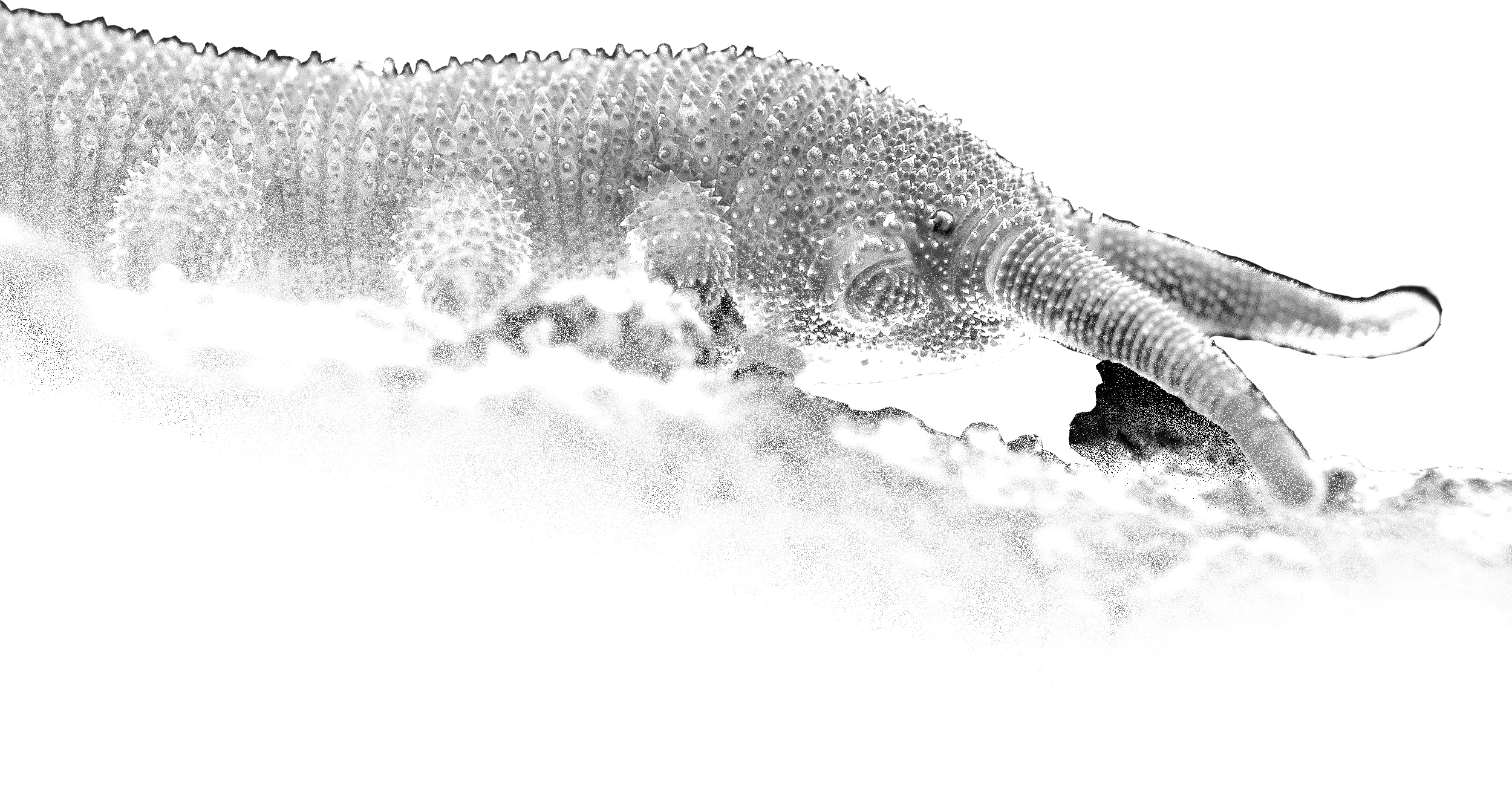
(Peripatopsidae)
Southern Velvet Worms
Перипатопсидні
Peripatopsidae or the Southern Velvet Worms are one of two extant families of velvet worm. This family includes more than 140 described species distributed among 41 genera.
The Peripatopsidae exhibit relatively many characteristics that are perceived as original or “primitive” with respect to the Peripatidae. The species in this family have relatively few legs, ranging from 13 pairs (in Ooperipatellus nanus) to a maximum of 29 pairs (in Paraperipatus papuensis). Behind or between the last leg pair is the genital opening (gonopore). This family includes both oviparous genera (e.g., Ooperipatellus and Ooperipatus) and viviparous genera, which adopt various modes of supplying nourishment to their embryos, ranging from lecithotrophic ovoviviparity (with yolky eggs retained in their uteri, e.g., Peripatoides) to matrotrophic viviparity (with little or no yolk in the eggs retained in their uteri and nourishment supplied by the mother instead, e.g., Metaperipatus, Opisthopatus, Paraperipatus, Paropisthopatus, and Peripatopsis). The Peripatopsidae lack a placenta, however, which has been found in velvet worms only in the neotropical Peripatidae.
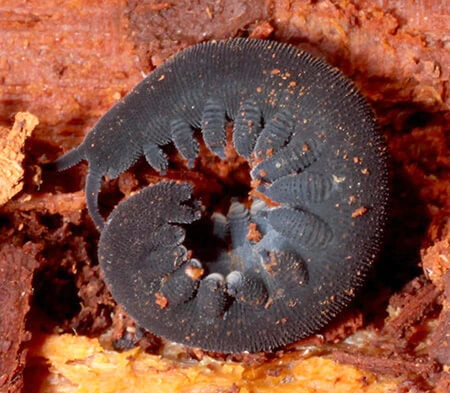
(Euperipatoides rowelli)
Tallaganda Velvet Worm
Оніхофора Ровелла
Occurs in humid, temperate forests of south–eastern Australia. Its main habitat are decaying logs on the forest floor, where it lives in crevices and feeds on small invertebrates, such as termites and crickets.
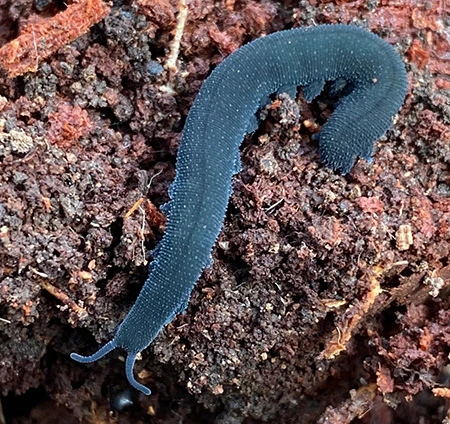
(Euperipatoides kanangrensis)
Kanangra Velvet Worm
Оніхофора Кананґри
Lives in the tropical forests of Eastern Australia.
Another representative of the genus (Euperipatoides) lives in the eastern part of Australia – Euperipatoides leuckarti.
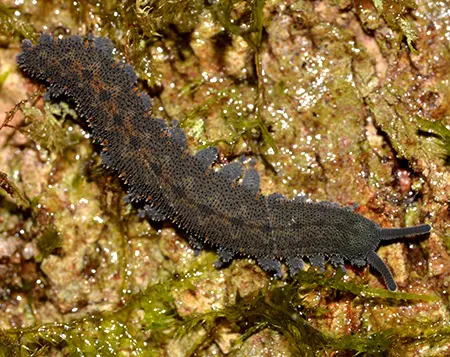
(Nodocapitus inornatus)
Inornate Velvet Worm
Неоздоблена оніхофора
The type locality of this species is Gibralter Range National Park, New South Wales, Australia.
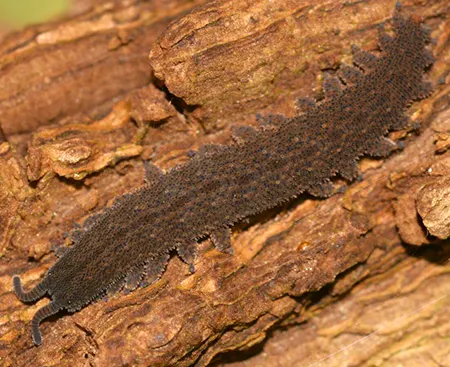
(Nodocapitus barryi)
The type locality of this species is Gibralter Range National Park, New South Wales, Australia.
The genus (Microperoryctes) also includes: Nodocapitus formosus.
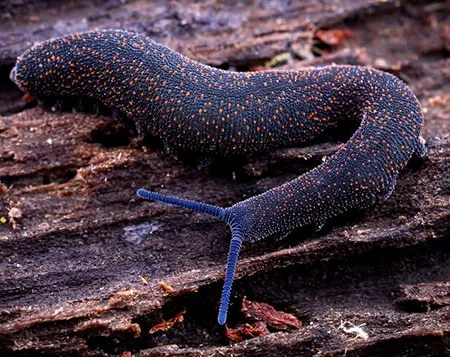
(Metaperipatus blainvillei)
Orange-Speckled Velvet Worm
Оніхофора Бленвіля
It lives in the temperate forests of central Chile.
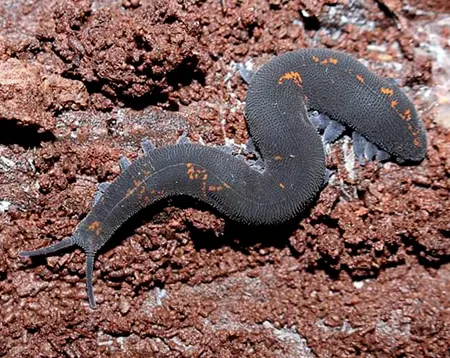
(Metaperipatus inae)
It lives in the temperate forests of central Chile.
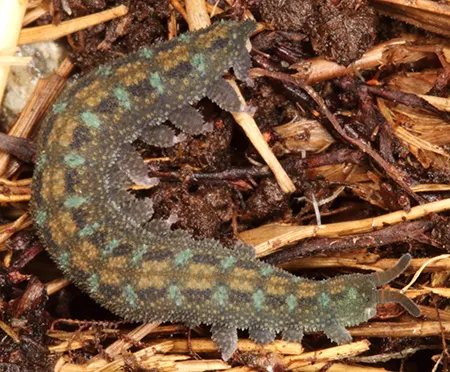
(Ooperipatellus viridimaculatus)
Green-Spotted Velvet Worm
Зеленоплямаста оніхофора
It is found in the South Island of New Zealand.
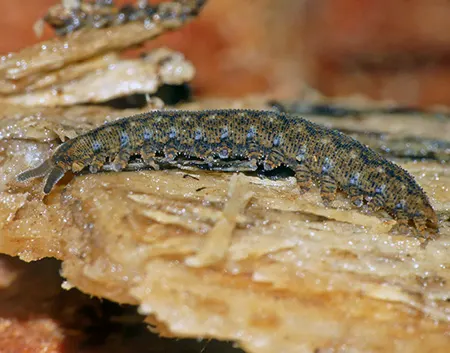
(Ooperipatellus decoratus)
Decorated Velvet Worm
Оздоблена оніхофора
It is found in south-eastern Australia and the island of Tasmania.
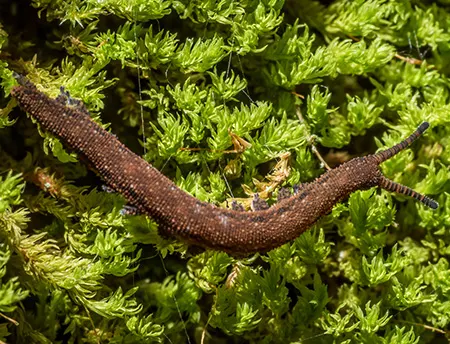
(Ooperipatellus nanus)
Is endemic to New Zealand and is found in the South Island.
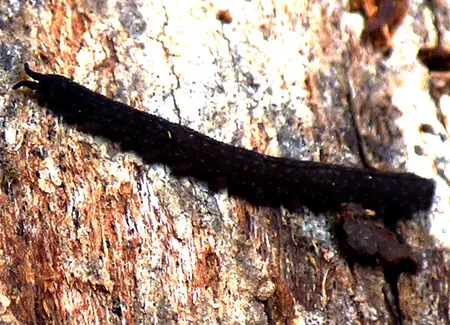
(Ooperipatellus parvus)
It is found in South Australia.
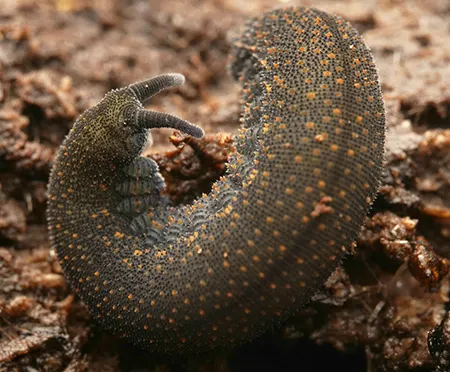
(Ooperipatellus duwilensis)
It is found in Victoria, Australia.
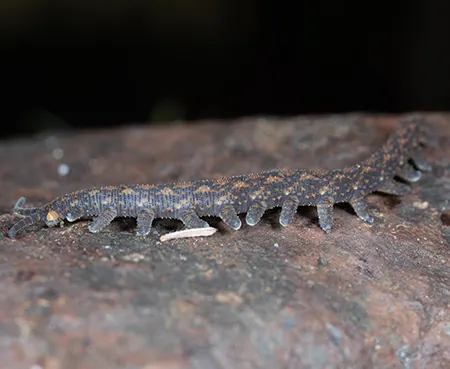
(Ooperipatellus nickmayeri)
It is endemic to Tasmania.
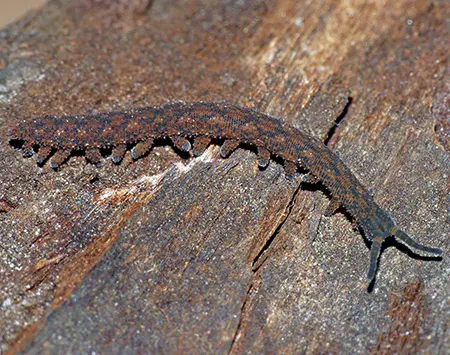
(Ooperipatellus spenceri)
It is endemic to Tasmania.
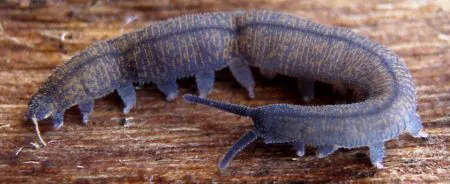
(Ooperipatellus cryptus)
It is endemic to north-western Tasmania.
The genus (Ooperipatellus) also includes: Ooperipatellus insignis.
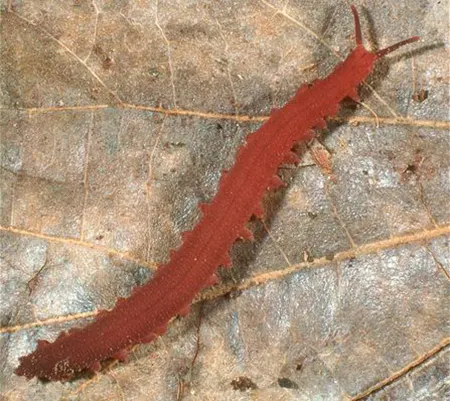
(Opisthopatus roseus)
Pink Velvet Worm
Рожева оніхофора
It is endemic to the Ngele mistbelt forest, near the town of Kokstad in the KwaZulu-Natal province of South Africa

(Opisthopatus cinctipes)
Common Velvetworm
Звичайна оніхофора
The type locality is in South Africa.
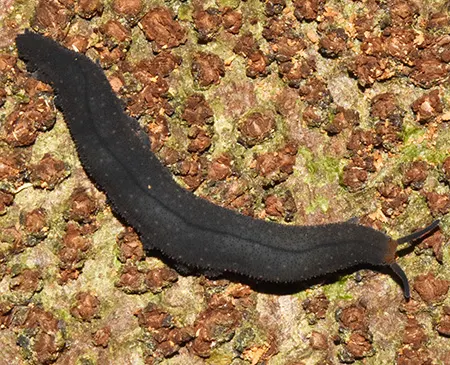
(Opisthopatus kwazululandi)
Coastal Velvetworm
Прибережна оніхофора
It is found in Eastern Cape province and Kwazulu-Natal province in South Africa.
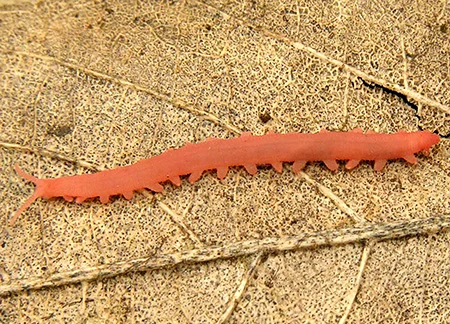
(Opisthopatus camdebooi)
Camdeboo Velvetworm
Камдебуська оніхофора
It is endemic to the Camdeboo National Park in South Africa.
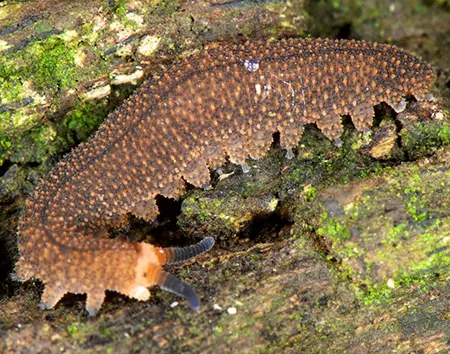
(Opisthopatus drakensbergi)
High Drakensberg Velvetworm
It is found at high altitude in the forests of the Drakensberg mountains in KwaZulu-Natal province in South Africa.
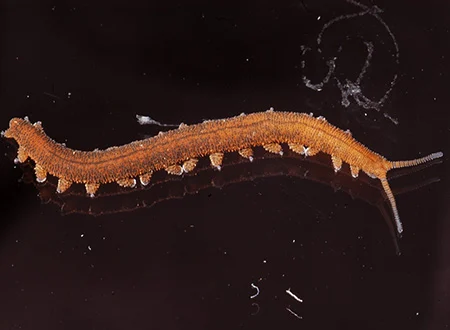
(Opisthopatus highveldi)
Highveld Velvetworm
Хайвельдська оніхофора
It is found in indigenous forest patches along the Highveld in Mpumalanga province in South Africa.
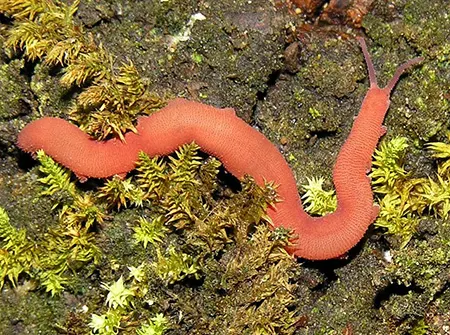
(Opisthopatus amaxhosa)
Xhosa Velvet Worm
Оніхофора Коса
Is found in the Eastern Cape province in South Africa.
The genus (Opisthopatus) also includes: Opisthopatus amatolensis, Opisthopatus baziya, Opisthopatus herbertorum, Opisthopatus laevis, Opisthopatus natalensis, Opisthopatus swatii.
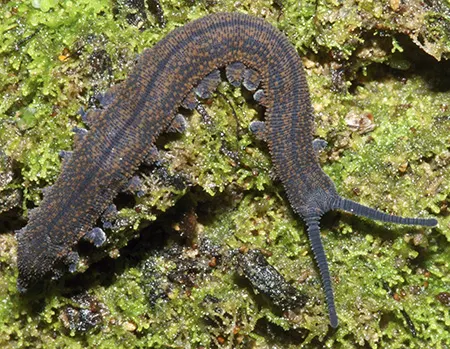
(Peripatoides novaezealandiae)
New Zealand Velvet Worm
Новозеландська оніхофора
Is endemic to New Zealand.
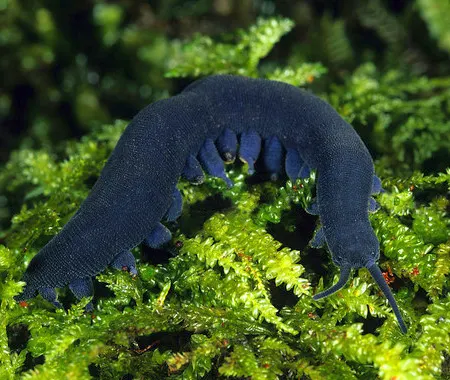
(Peripatoides indigo)
Indigo Velvet Worm
Has been found in the Nelson region at the top of the South Island, New Zealand.
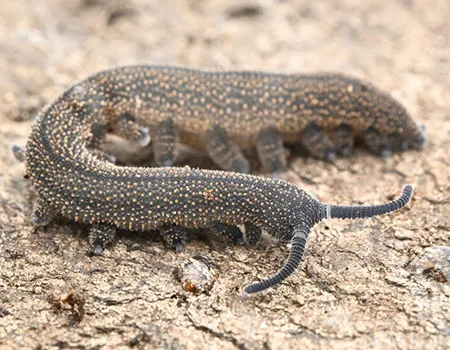
(Peripatoides aurorbis)
Is endemic to New Zealand.
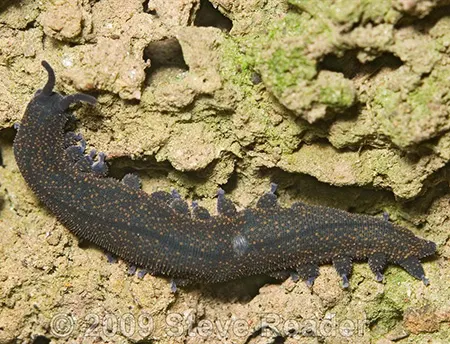
(Peripatoides suteri)
Is endemic to New Zealand.
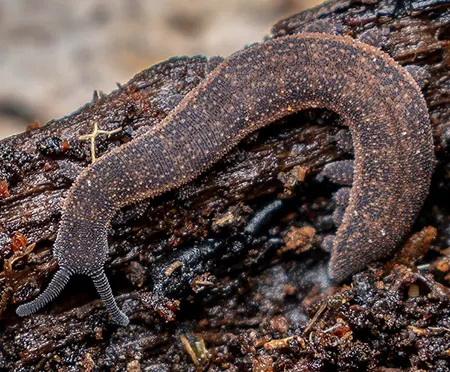
(Peripatoides otepoti)
Dunedin Peripatus
Данідінська оніхофора
Is endemic to New Zealand.
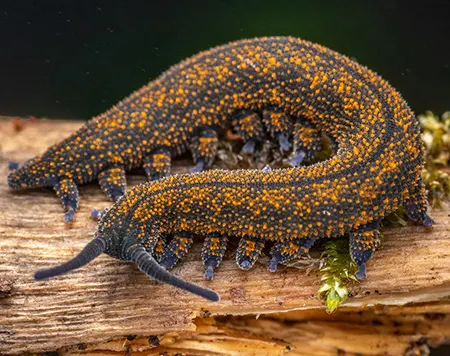
(Peripatoides sympatrica)
Is endemic to New Zealand.
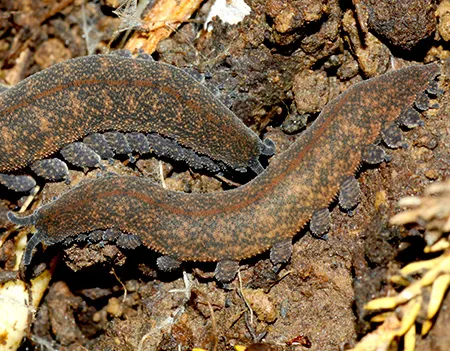
(Peripatoides taitonga)
Is endemic to New Zealand.
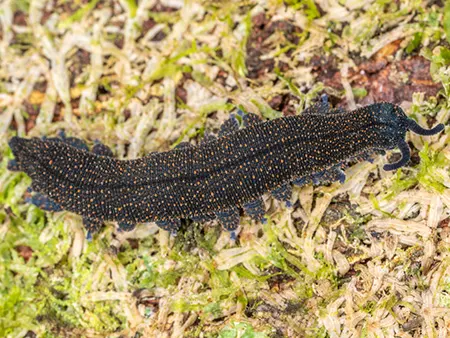
(Peripatoides morgani)
Is endemic to New Zealand.
The genus (Peripatoides) also includes: Peripatoides kawekaensis, Peripatoides waikaia.
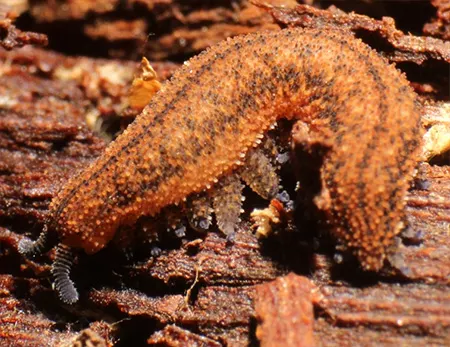
(Kumbadjena kaata)
The type locality is in Western Australia.
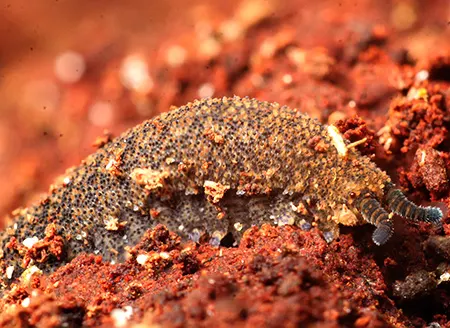
(Kumbadjena extrema)
The type locality is in Western Australia.
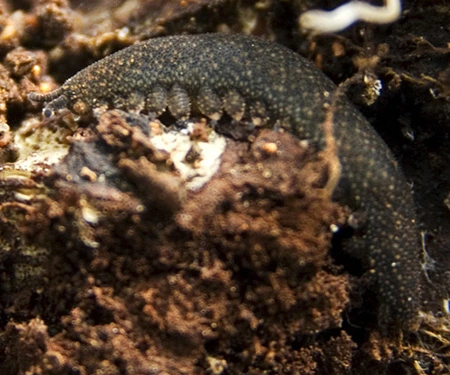
(Kumbadjena occidentalis)
The type locality is in Western Australia.
The genus (Kumbadjena) also includes: Kumbadjena shannonensis, Kumbadjena karricola, Kumbadjena toolbrunupensis.
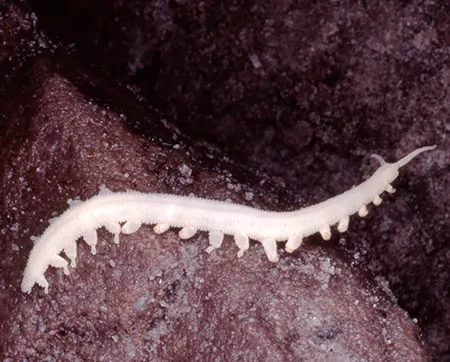
(Peripatopsis alba)
White Cave Velvet Worm
Біла печерна онихофора
Is rare and limited to one cave system on Table Mountain in South Africa.
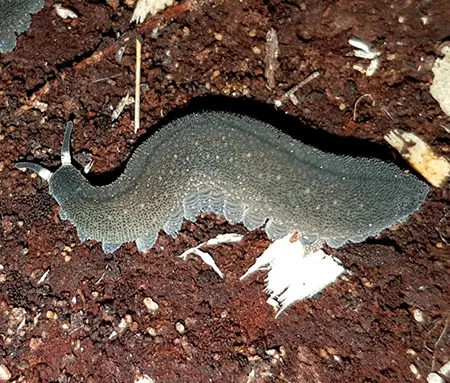
(Peripatopsis overbergiensis)
Overberg Velvet Worm
This species is limited to the Overberg region of South Africa.
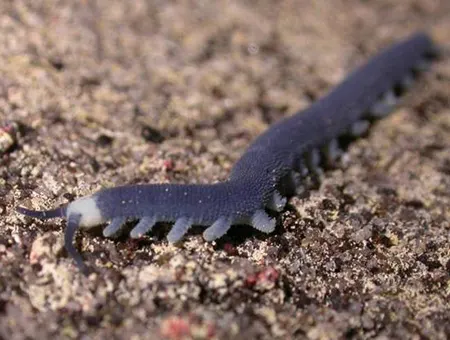
(Peripatopsis balfouri)
Southern Blue Velvet Worm
Південна блакитна оніхофора
The type locality is in South Africa.
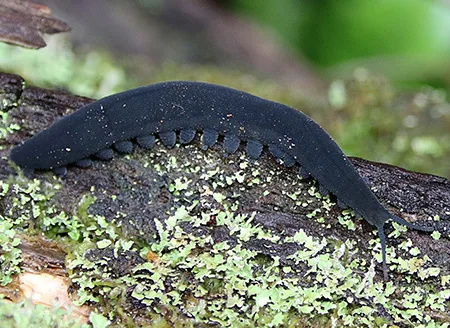
(Peripatopsis capensis)
Cape Velvet Worm
Капська оніхофора
The native range of this species is limited to the Cape Peninsula of South Africa.
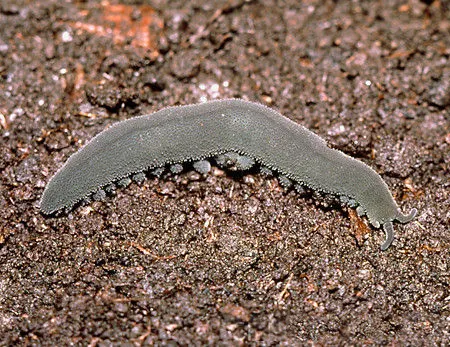
(Peripatopsis moseleyi)
Moseley's Velvet Worm
Оніхофора Мозлі
The type locality is in South Africa.
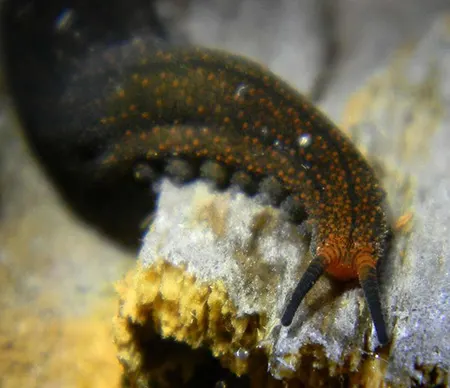
(Peripatopsis clavigera)
Knysna Velvet Worm
Кніснська оніхофора
Is found in subtropical or tropical moist montane forests of the Diepwalle Nature Reserve in South Africa.

(Peripatopsis lawrencei)
Lawrence's Velvet Worm
Оніхофора Лоуренса
Is restricted to the Theewaterskloof-Overstrand region of South Africa.
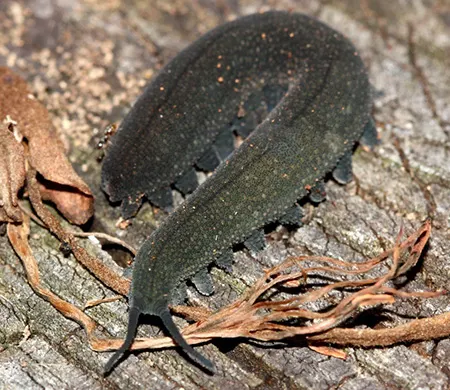
(Peripatopsis sedgwicki)
Tsitsikamma Velvet Worm
Оніхофора Ціцікамма
Has a narrow geographic distribution in South Africa but is especially abundant in the indigenous forest of the Tsitsikamma mountains.
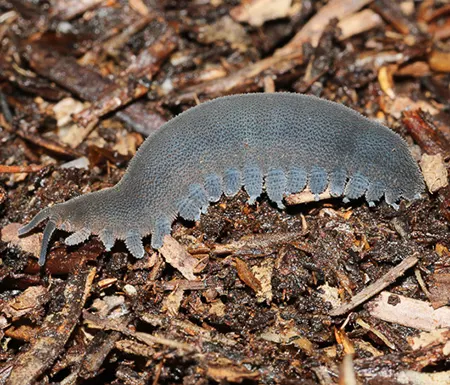
(Peripatopsis bolandi)
Boland Velvet Worm
Is found in the Hottentots Holland Mountain region in South Africa.
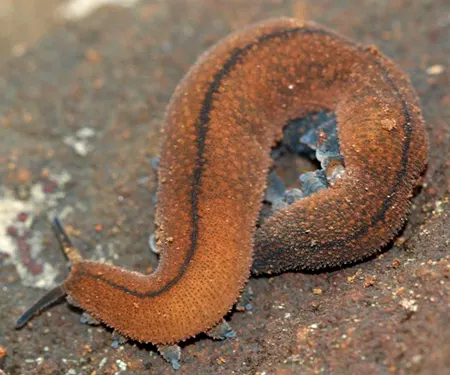
(Peripatopsis birgeri)
Curry Velvetworm
It is known only from the Mount Currie Nature Reserve in South Africa.
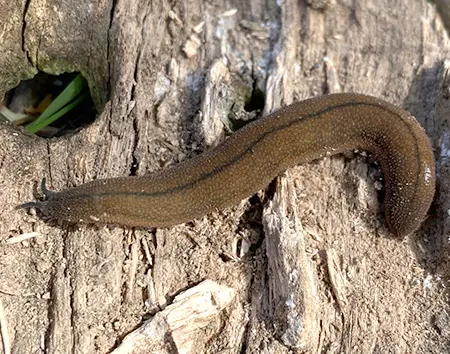
(Peripatopsis orientalis)
Eastern Forest Velvetworm
Східна лісова оніхофора
It is found in South Africa.
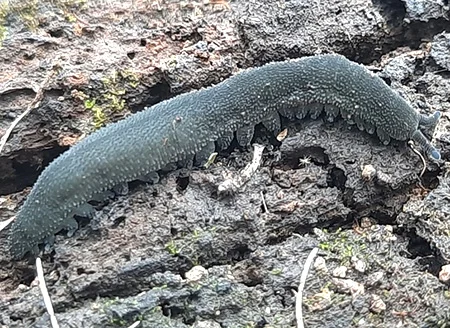
(Peripatopsis polychroma)
Polychrome Velvetworm
Поліхромна оніхофора
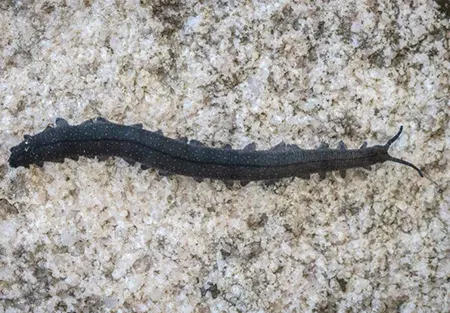
(Peripatopsis barnardi)
Rohan's Velvetworm
Оніхофора Рохана
The genus (Peripatopsis) also includes: Peripatopsis aereus, Peripatopsis leonina, Peripatopsis stelliporata, Peripatopsis cederbergiensis, Peripatopsis collarium, Peripatopsis fernkloofi, Peripatopsis hamerae, Peripatopsis janni, Peripatopsis jonkershoeki, Peripatopsis kogelbergi, Peripatopsis landroskoppie, Peripatopsis landroskoppie, Peripatopsis limietbergi, Peripatopsis margaritarius, Peripatopsis palmeri, Peripatopsis storchi, Peripatopsis tulbaghensis.
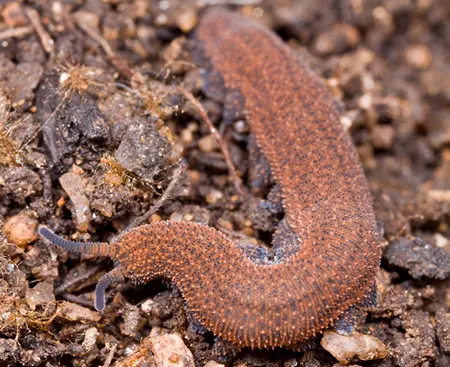
(Occiperipatoides gilesii)
Giles's Velvet Worm
Оніхофора Джайлза
Most samples of the species have been collected in the Perth Basin, which stretches from the Swan Coastal Plain to the Darling Scarp.
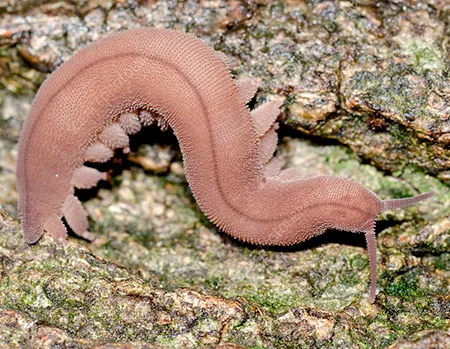
(Tasmanipatus barretti)
Giant Velvet Worm
Гігантська оніхофора
Is endemic to Tasmania.
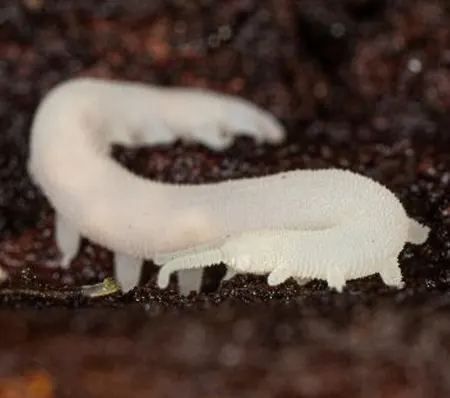
(Leucopatus anophthalmus)
Blind Velvet Worm
Сліпа оніхофора
It is found in northeast Tasmania, Australia, and is ovoviviparous.
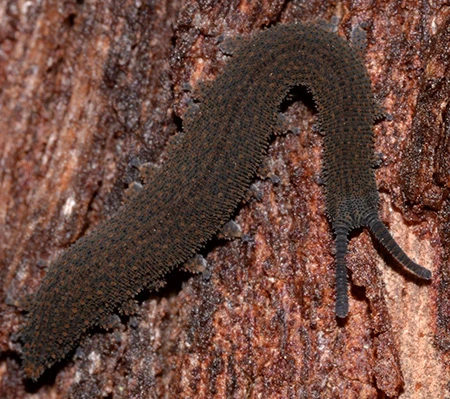
(Aethrikos setosa)
The type locality of this species is Styx River State Forest, New South Wales, Australia.
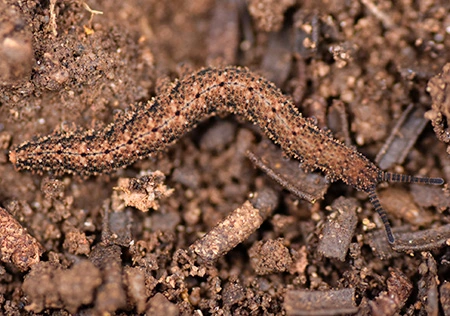
(Anoplokaros keerensis)
Keer Mount Velvet Worm
The type locality of this species is Mount Keira, New South Wales, Australia.
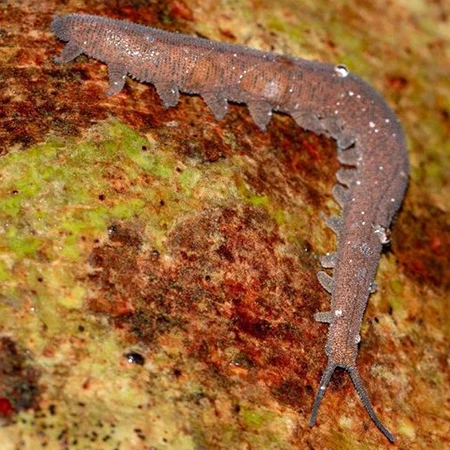
(Austroperipatus aequabilis)
The type locality north-western Australia.
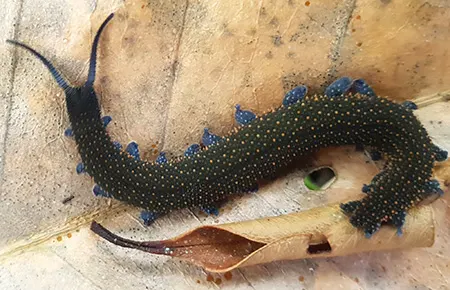
(Austroperipatus eridelos)
The genus (Austroperipatus) also includes: Austroperipatus paradoxus, Austroperipatus superbus.
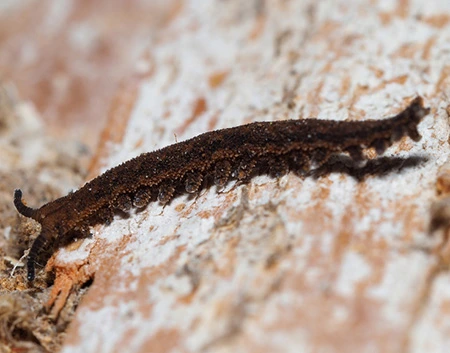
(Lathropatus nemorum)
The type locality is Cobboboonee National Park, Victoria, Australia.
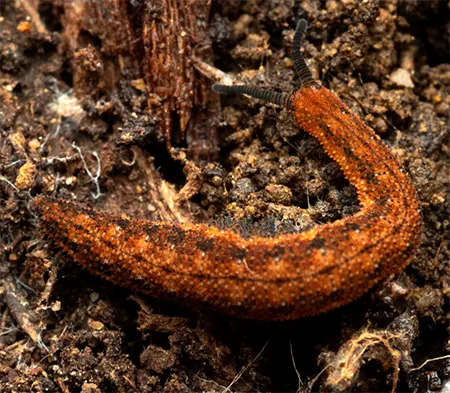
(Mantonipatus persiculus)
Has a limited distribution in the Southern Mount Lofty Ranges of South Australia.
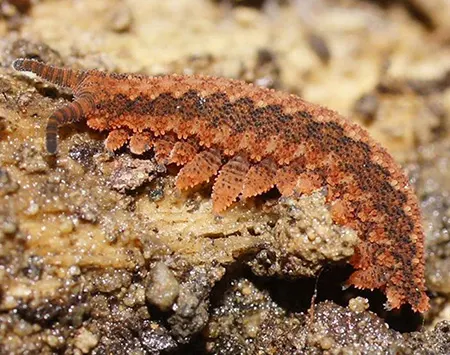
(Ooperipatus centunculus)
Collected from Mount Donna Buang, Victoria, Australia.
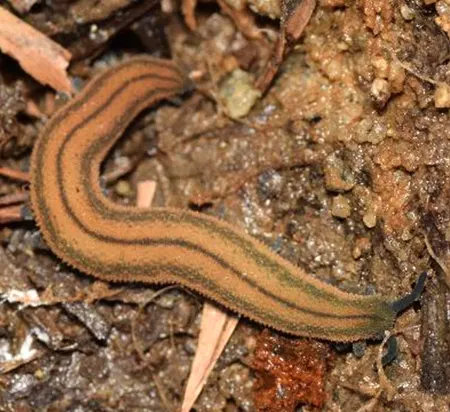
(Ooperipatus costatus)
It is found in New South Wales and the Australian Capital Territory.
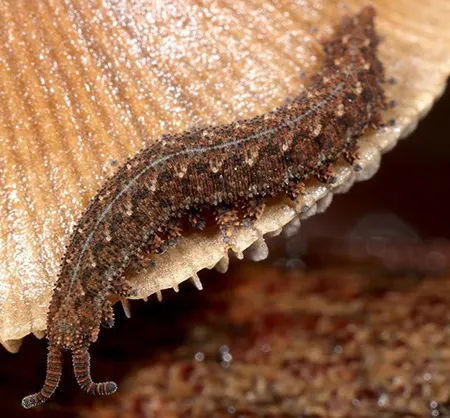
(Ooperipatus silvanus)
It is found in Victoria, Australia.

(Ooperipatus caesius)
It is found in Victoria, Australia.
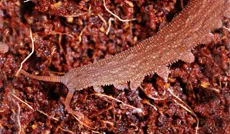
(Ooperipatus hispidus)
It is found in New South Wales, Australia.
The genus (Ooperipatus) also includes: Ooperipatus birrgus, Ooperipatus lepidus, Ooperipatus nebulosus, Ooperipatus oviparus, Ooperipatus porcatus, Ooperipatus pulchellus.
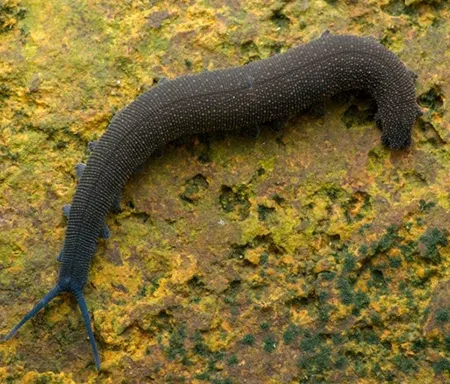
(Minyplanetes kroombensis)
Kroombit Velvet Worm
Крумбітська оніхофора
The type locality of this species is Kroombit Tops, Queensland, Australia.
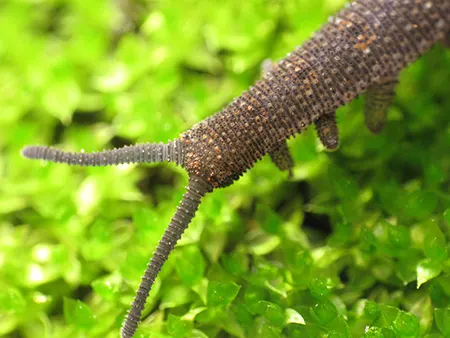
(Phallocephale tallagandensis)
Tallaganda Velvet Worm
Таллаґандська оніхофора
The type locality of this species is Tallaganda National Park, New South Wales, Australia.
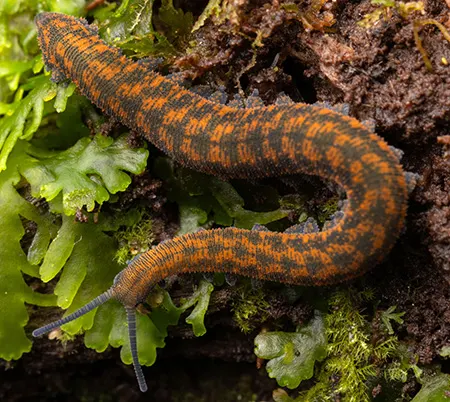
(Paraperipatus)
Are found in New Guinea and the surrounding islands, including the Maluku achipelago.
The genus (Paraperipatus) also includes: Paraperipatus amboinensis, Paraperipatus ceramensis, Paraperipatus keiensis, Paraperipatus novaebritanniae. Paraperipatus papuensis, Paraperipatus schultzei, Paraperipatus stresemanni, Paraperipatus vanheurni.
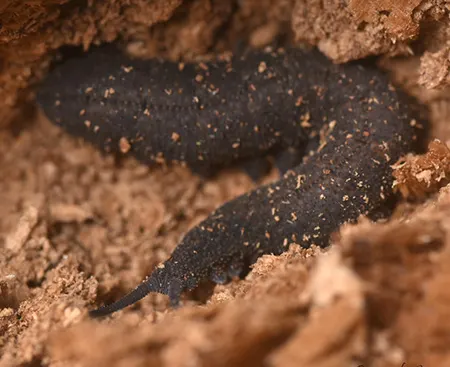
(Paropisthopatus umbrinus)
Dusky Velvet Worm
Темна оніхофора
The type locality is in central Chile.
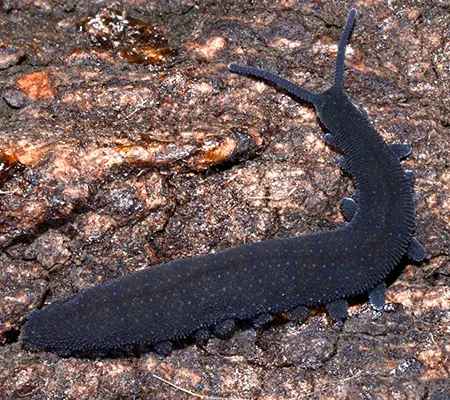
(Ruhbergia brevicorna)
The type locality is in New South Wales, Australia.
The genus (Ruhbergia) also includes: Ruhbergia bifalcata, Ruhbergia rostroides.
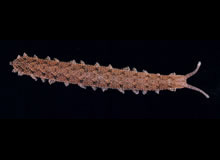
(Regimitra quadricaula)
The type locality of this species is Tuggolo State Forest, New South Wales, Australia.
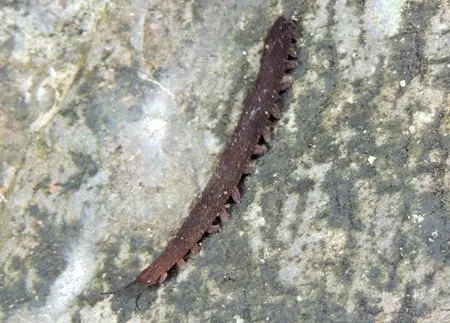
(Leuropezos eungellensis)
The type locality of this species is Eungella National Park, Queensland, Australia.
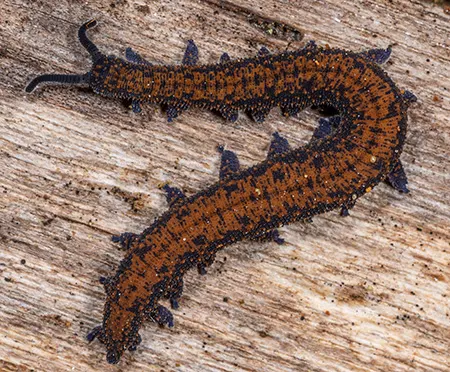
(Diemenipatus mesibovi)
The type locality is in Tasmania.
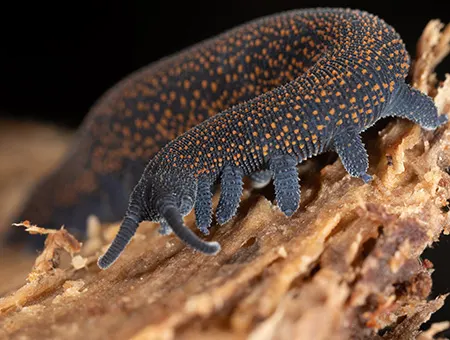
(Diemenipatus taiti)
The type locality is in Tasmania.
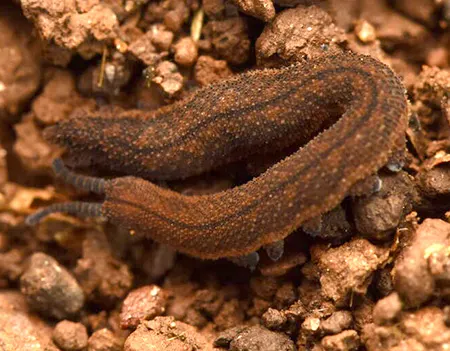
(Hylonomoipos brookensis)
It is found in southeastern Queensland, Australia.
The genus (Hylonomoipos) also includes: Hylonomoipos akares.
(Planipapillus)
Whose species are found in eastern Victoria and southeastern New South Wales, Australia.
The genus (Planipapillus) also includes: Planipapillus annae, Planipapillus berti, Planipapillus biacinaces, Planipapillus biacinoides, Planipapillus bulgensis, Planipapillus cyclus, Planipapillus gracilis, Planipapillus impacris, Planipapillus mundus, Planipapillus taylori, Planipapillus tectus, Planipapillus vittatus.
(Cephalofovea tomahmontis)
The type locality is Mount Tomah, New South Wales, Australia.
The genus (Cephalofovea) also includes: Cephalofovea cameroni, Cephalofovea clandestina, Cephalofovea pavimenta.
(Vescerro turbinatus)
The type locality of this species is the Iron Range, Queensland, Australia.
(Acanthokara kaputensis)
The type locality of this species is Mount Kaputar, New South Wales, Australia.
(Aktinothele eucharis)
The type locality of this species is Finch Hatton Gorge, Queensland, Australia.
(Baeothele saukros)
The type locality is in New South Wales, Australia.
(Centorumis trigona)
The type locality is in New South Wales, Australia.
(Critolaus lepidus)
The type locality of this species is Kroombit Tops, Queensland, Australia.
(Dactylothele habros)
The type locality is Nothofagus Mountain, New South Wales, Australia.
(Florelliceps stutchburyae)
The type locality is Mount Warning, New South Wales, Australia.
(Konothele kallimos)
The type locality of this species is Mount Hemmant, Queensland, Australia.
(Sphenoparme hobwensis)
The type locality of this species is Lamington National Park, Queensland, Australia.
(Tetrameraden meringos)
The type locality of this species is the Warrumbungle Range, New South Wales, Australia.
(Wambalana makrothele)
The type locality of this species is Telegherry State Forest, New South Wales, Australia.
(Dystactotylos aletes)
The type locality is Massey Range, Queensland, Australia.
